I have played a handful of Mechadon levels but they were all within the context of community projects. Granted, his outstanding work in larger pieces like Claustrophobia 1024 was why he was chosen as Doomworld's Mapper of the Year in 2009. A large portion - the majority, even - of Brett's material is actually created for multiplayer mapsets. This is a major aspect of his pie-in-the-sky project, Supplice. His single-player solo work is much rarer but he tends to use his powers for good, e.g. bailing out megaWADs in crisis. Counterattack is its own thing, though, a set born from his submission to the first Vinesauce Mapping Contest (this one's MAP02). The rest of the material was built bafflingly quickly and released in early 2017. There are about nine map replacements in all consisting of five normal, two utility, and two bonus. The set is meant for play in Boom compatible ports but the engine has got to pack some horsepower under the hood. It was specifically tested in PrBoom-Plus, ZDoom, GZDoom, and Eternity.
The plot is another shade of Hell on Earth. Demons have overrun the planet and taken hold of a MacGuffin called the Flux Gate. Harrell doesn't mention how this was supposed to help out; it's presumably a new model of the Quantum Accelerator. Things get a little fuzzy here but I think that the monsters are using a pulsar as an energy source to continue to pull demonflesh and other grotesque nonsense from the ether to your homeworld. This immensely shitty situation can only be remedied by setting foot on Earth and physically repossessing the Flux Gate. Of course, you're the perfect person for the job, setting out from the doomed Excella outpost.
It's funny to think but Counterattack was built within the long development period of Vela Pax, which was originally conceived of as a way for Mechadon to take a break from Supplice. I say this not to make light of the time spent on these projects but to emphasize the level of craftsmenship that Brett employs in all of his work. If there is a reason why MEK-CATK enjoyed a relatively smooth production then it can probably be attributed to Harrell's current methodology regarding his workflow. The layouts for these levels were built first, the foundation and frame upon which the architecture and detailing are lovingly hung.
Counterattack looks gorgeous and it's done almost entirely with stock textures. Sometimes it's because he's using them outside of their usual context. At others it's the careful use of lighting gradients that breathes new life into these assets, at the time nearing twenty-five years of age. Largely, though, it's the product of adorning Mechadon's immaculate level geometry. Brett takes you on a whirlwind tour. The first two locations are I assume separate, interstellar UAC bases, the opener looking clean and beautiful under a gorgeous night sky while the other is swamped in a poisoned ocean. With "Aegritudo" (MAP03), though, you appear to have set foot on occupied Earth. From here you battle through a sort of hybrid construction reminiscent of the E4 theme before traversing the planetary Pandemonium that no doubt surrounds the Flux Gate. The final facility has a great callback to the teleporter constructions seen in the story part of "Aggilis" (MAP01) but there's a good chance of you forgetting about them by then. I realize now that the opener is a reference to Vela Pax but, well, I haven't played the beta yet!
These levels are huge and their layouts generally allow you to explore in several different directions, slowly opening the map up. It's interesting to see just how many ways they are interconnected once you're done, particularly in "Maeror (MAP04)". Visual links are far more prevalent than physical ones, though, and you'll have to learn the layouts as you play them if you don't want to get lost. All of my banes were blue-key related. I wandered away from the elevator that led to the card in MAP01, ultimately finding the secret slaughter route first. I also failed to realize when I had opened up the card yard in MAP03, more invested in the pit switch ambush than its actual function. I suffered a similar misconception in MAP04, believing there to be but one eye pillar button when in fact two of them exist and must be used in order to open the demon's throat. These instances are faults of my own, of course, and not the business of the designer to hold my hand through the playing process.
It's also interesting how Harrell has balanced between painstaking environmental design and floor plans that are easy to move and fight through. MEK-CATK is networked with flat, wide walkways in order to allow players to run quickly and smoothly. This is paramount in minimizing traversal time from one side to another. These open corridors speak to the agency of a multiplayer-focused author, not to say that there aren't dalliances - particularly in the bonus MAP31 - where this gives way to more cramped features. Counterattack has much of the window dressing of works like Breach and Brigandine but its commitment to maneuverability is manifest in the scope of its playing spaces.
Harrell has a great philosophy to thing placement that I don't see get enough credit. Each of these levels is gloaming with monsters but you easily chew through them. It is a scaled-up approach to casual combat that works because you feel like you are fighting the hordes of Hell while being absolved of the expected difficulty. Until the later levels, at least. The weapon pacing further facilitates this play by making the chaingun available early for zombie massacres while also bestowing the beloved rocket launcher for beefier foes. If you seem to be having trouble with the more claustrophobic invasions then you can typically find an early copy of the BFG... tucked away in a secret, of course.
The true slaughter encounters aren't as multi-faceted as other modern, difficult mapsets but this is in and of itself a virtue. The same principles that guided you through the opening will take you most of the way to the end. "Dolor" (MAP05) has its own set of swerves, of course, the biggest being the introduction of the skull turret. You are given a lot of room to play in the subsequent arenas and players ultimately have the power to introduce the monsters to suit their own pace. This also allows hardcore players to immerse themselves in the chaos, crowdsurfing and infighting the way to a ragged, hard-earned victory.
I'd also be remiss if I didn't mention Mechadon's impressive array of sector machinery. Just about every switch press causes a change in the layout. Sometimes it's as simple as raising elevators or knocking down entire walls. At others you get stuff like enormous descending staircases, which cut their way into the level geometry in MAP03 and especially MAP04. One of the craziest bits is an ascending type that builds in oscillating phases, rippling back and forth in order to drag out the time where the player has to wait during an ambush. Voodoo doll scripting is simple but powerful and Brett has used it quite elegantly; the results are not unlike the sort of sequences seen in Doom 64.
Counterattack has a few bonuses that you can only access by manually switching levels. "Desiderium" (MAP31) is a relatively normal experience which ought to give you something a little bit stronger than "Aggilis" to play through. Mech's monster placement is more punchy, here, so give it a look if you're wanting some bite. "MicroLand" (MAP32) is a loving reference to The Adventures of Microman, a DOS platformer from 1993. If you thought that you hated the skull turrets in MAP05 then you'll despair as it feels as though half of the periphery is covered in them. To make matters worse you must sort this out while being pursued by the dreaded bubble ship. It's a boss with a ton of health that shoots every enemy projectile in a constant stream until you break line of sight. Enjoy!
I had a ton of fun playing this campaign of pure Mech. Rest assured, it'll take you awhile. Counterattack may be about as long as a megaWAD of smaller-sized levels. I can only imagine what sort of journey awaits in Vela Pax, which promises to be twice as big if not more so. If you're the sort of player who gets turned off by huge, exploratory maps then, well, Harrell's work was probably never going to be your first choice.


COUNTERATTACK
by Brett "Mechadon" Harrell
| MAP02 | Phlogiston |
|---|---|
 | This base has a more typical Mechadon feel reminiscent of his "Fomalhaut" from THT: Threnody (MAP10). The scheme is tan brick and dingy, often dark green. As you explore the base you will open up new areas and link them back to the main playing field. The core has key switches in a centralized position so that you're not completely at loss when you find one. It's still a challenging layout to parse. I could see where many of the ten secrets were but only got access to two - a frustrating experience. You don't need the hidden stuff to cut loose, though. Harrell is more than happy to supply you with guns and ammo, enough to weather another crusher-centric encounter for the red skull key. The descending elevator finale doesn't have quite the same air of desperation. |
| MAP04 | Maeror |
|---|---|
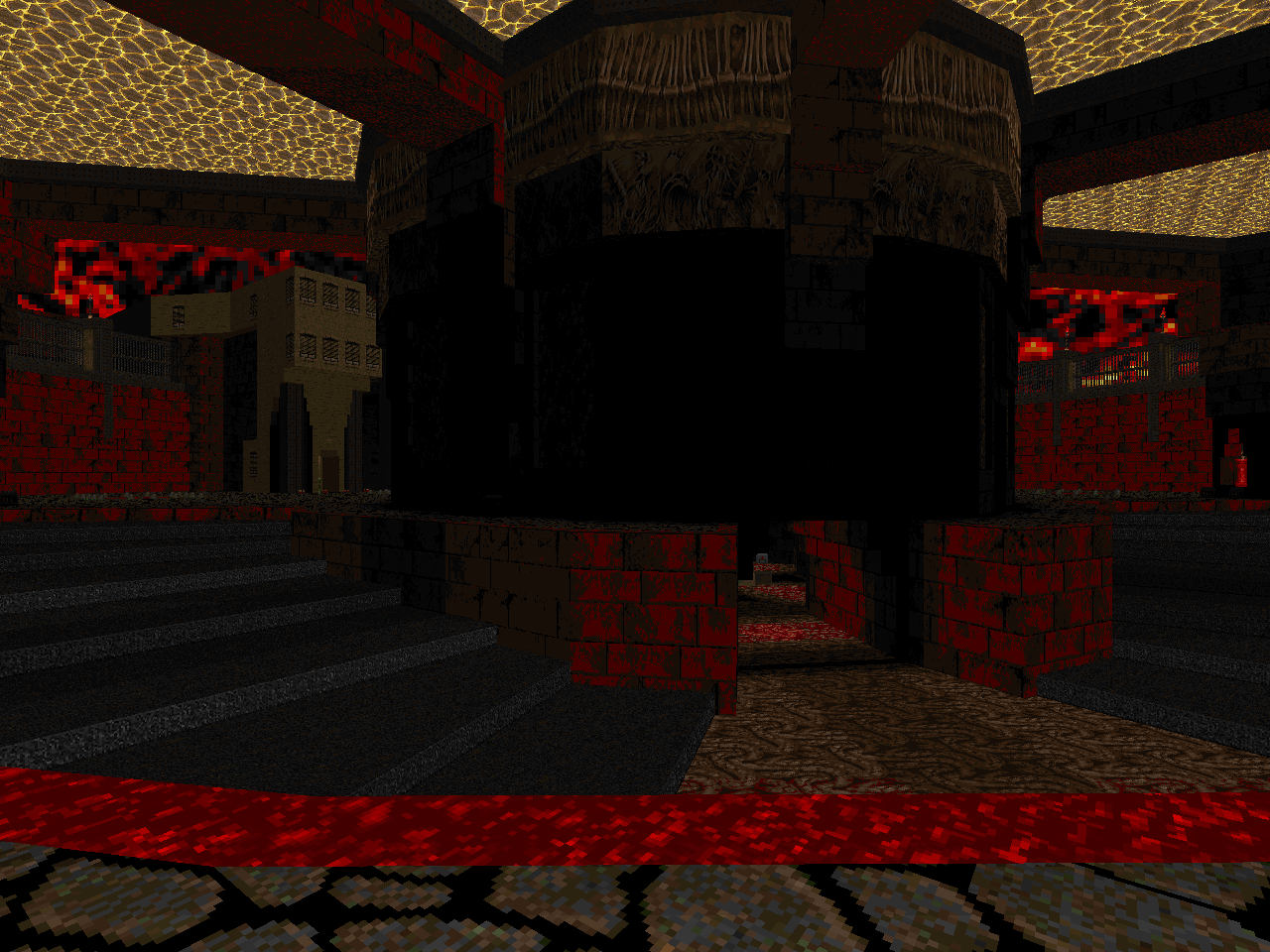 | Enormous and all Hell. The aesthetic reminds me in part of Hellbound's "City of Pandemonium" (MAP24). I think that this is largely a function of how both levels utilize vanilla textures to portray some kind of sprawling, fiendish metropolis. The scale here is much larger, though. Mech includes many slaughter and -lite encounters. The southeast yard features awesome transforming topography and an open-air fight that isn't too difficult to navigate. The northwest area in contrast is a great invul battle and gives you just enough rope to clean out the arch-viles while not breezing through. It also looks suspiciously like a Dragonfly. The finale from the skull key switch and on is an impressive gauntlet, the last area both atmospheric and containing a great swerve. There are so many different and unique areas to explore between these slaughters. The SSG demon's head is a fantastic setpiece and I really dig the amphitheatre stairs in the most city-esque portion. A triumph in architecture, detailing, lighting, and combat. |
BONUS LEVELS
| MicroLand | MAP32 |
|---|---|
| A cute reference to a DOS game that I'd never heard of before, The Adventures of Microman. The level is sort of in the style of Doom 2 the Way id Did's "Well of Wishes" (MAP32). It's an asymmetric boss battleground and littered with skull turrets. The bubble ship is pretty lethal but only fires all of the regular enemy projectiles so the main thing is to not get jammed up. The skull turrets are the real pain in the ass. If you can clear the ones around the blue armor gazebo and the fuckers in the backpack courtyard that look in then you can cat and mouse the boss. Death comes swiftly, though. If you grab all of the keys quickly then you can have a plasma gun. Why bother with a weapon that requires you to expose yourself for sustained damage, though? | 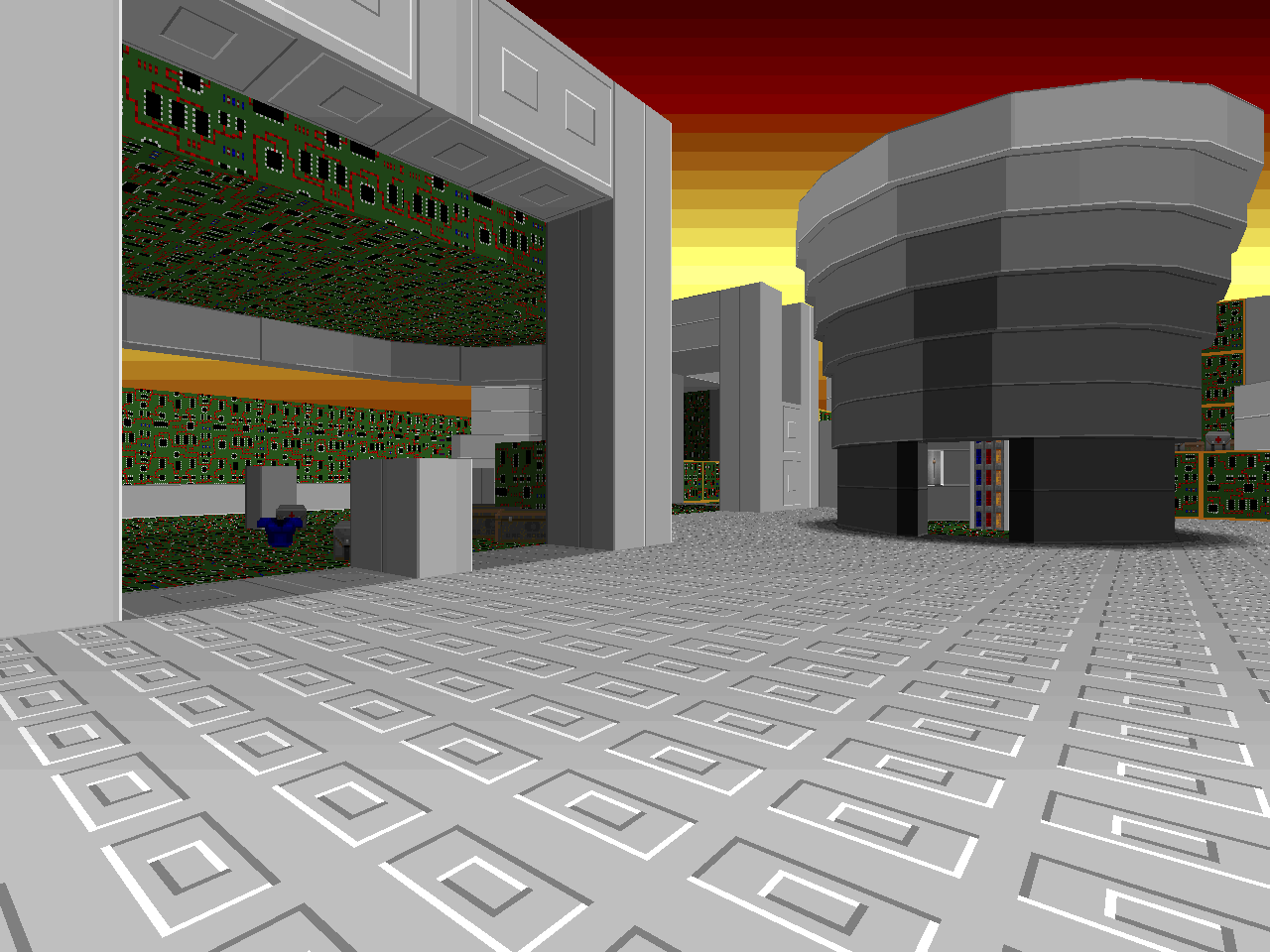 |
WORKIN' TOO HARD CAN GIVE YOU
A COUNTERATTACK-ACK-ACK-ACK-ACK-ACK
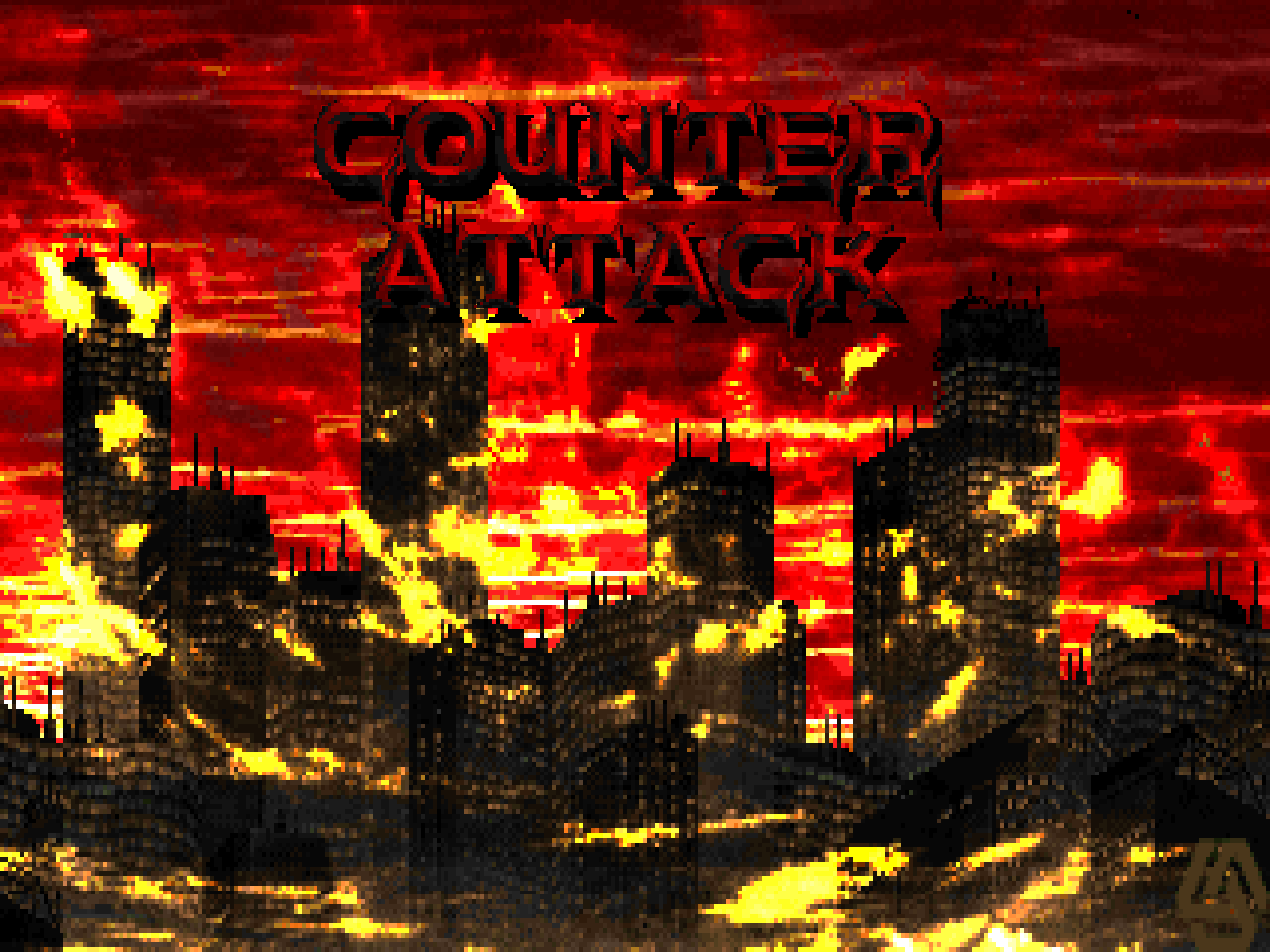
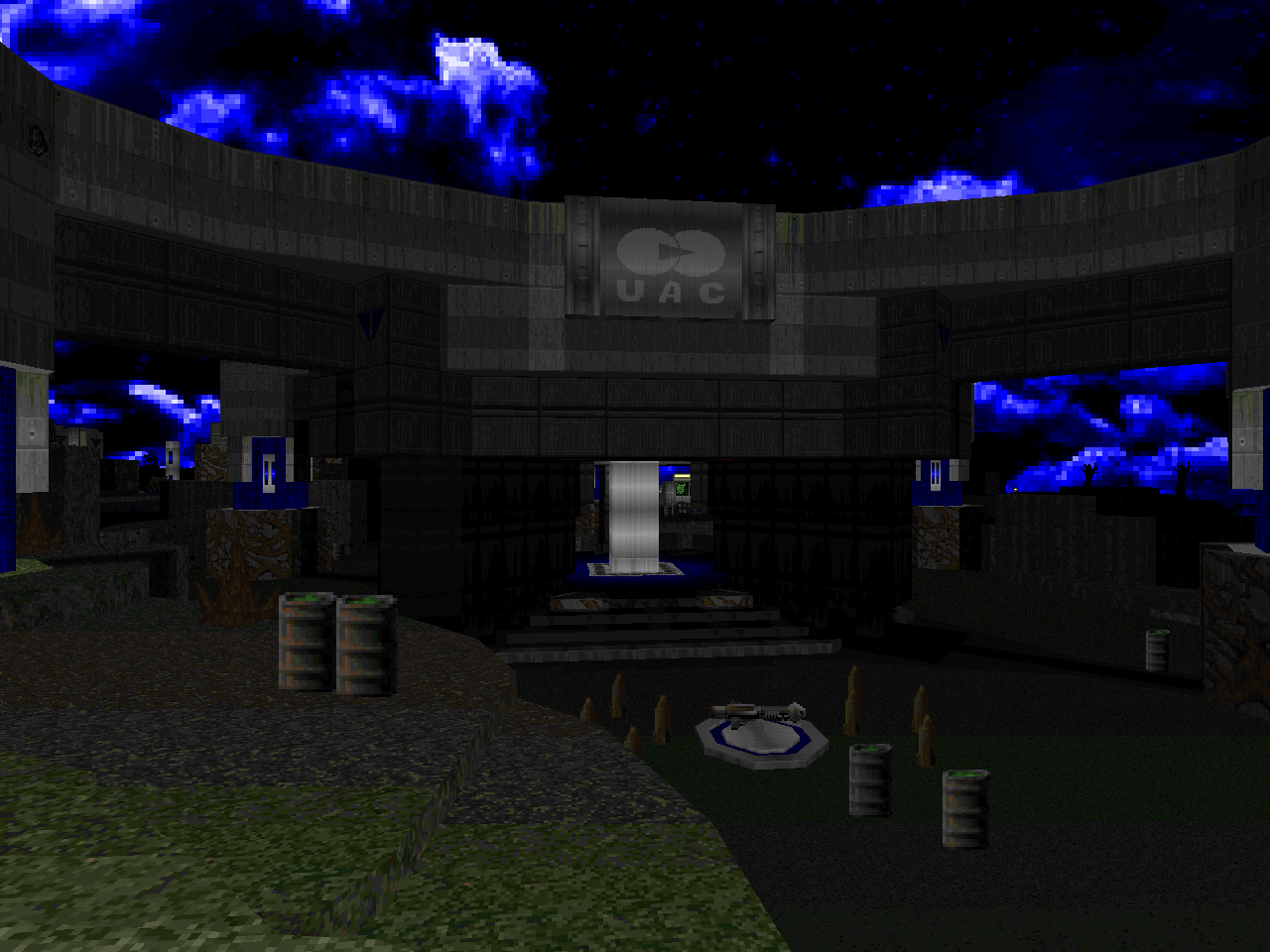
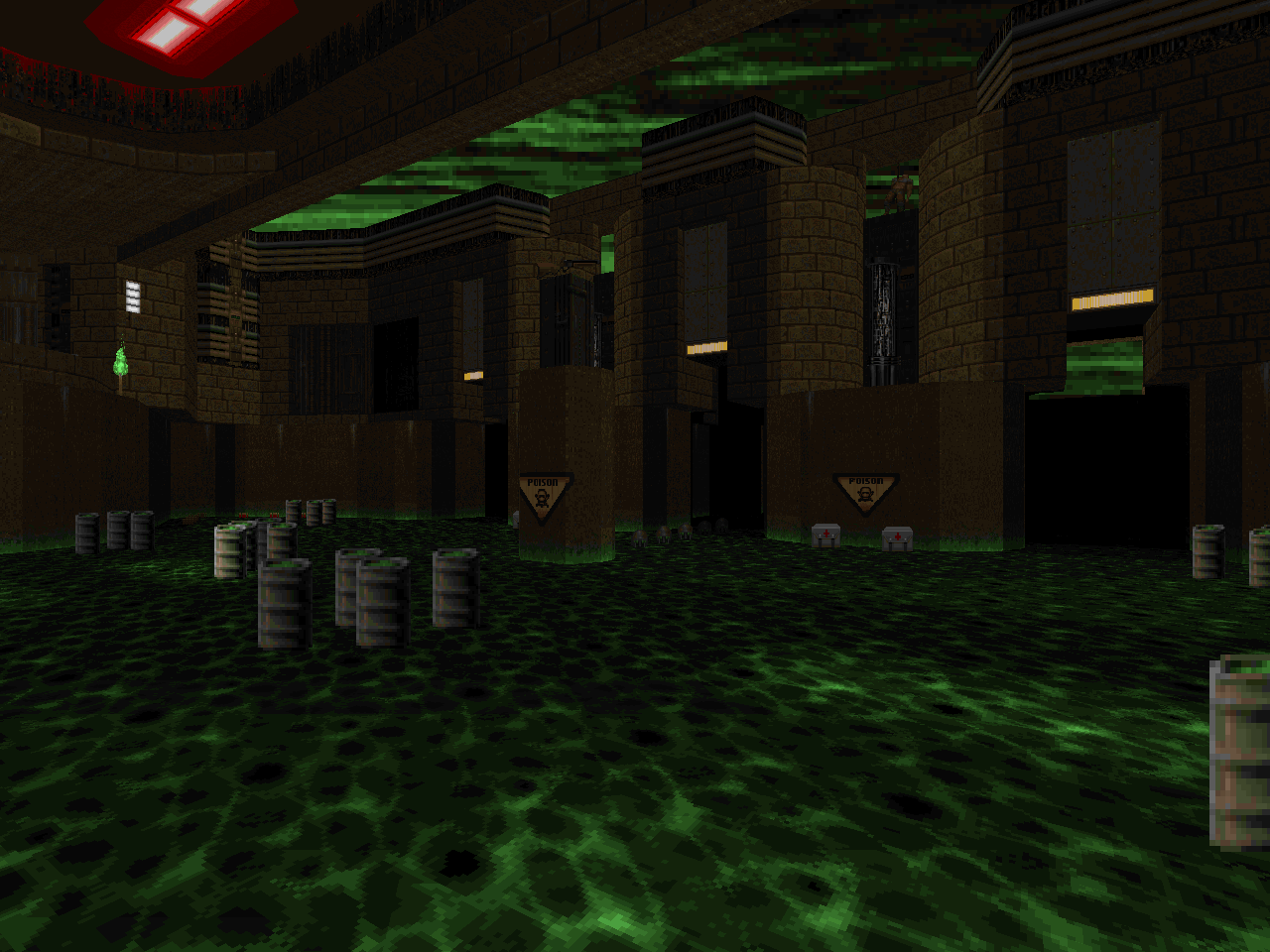
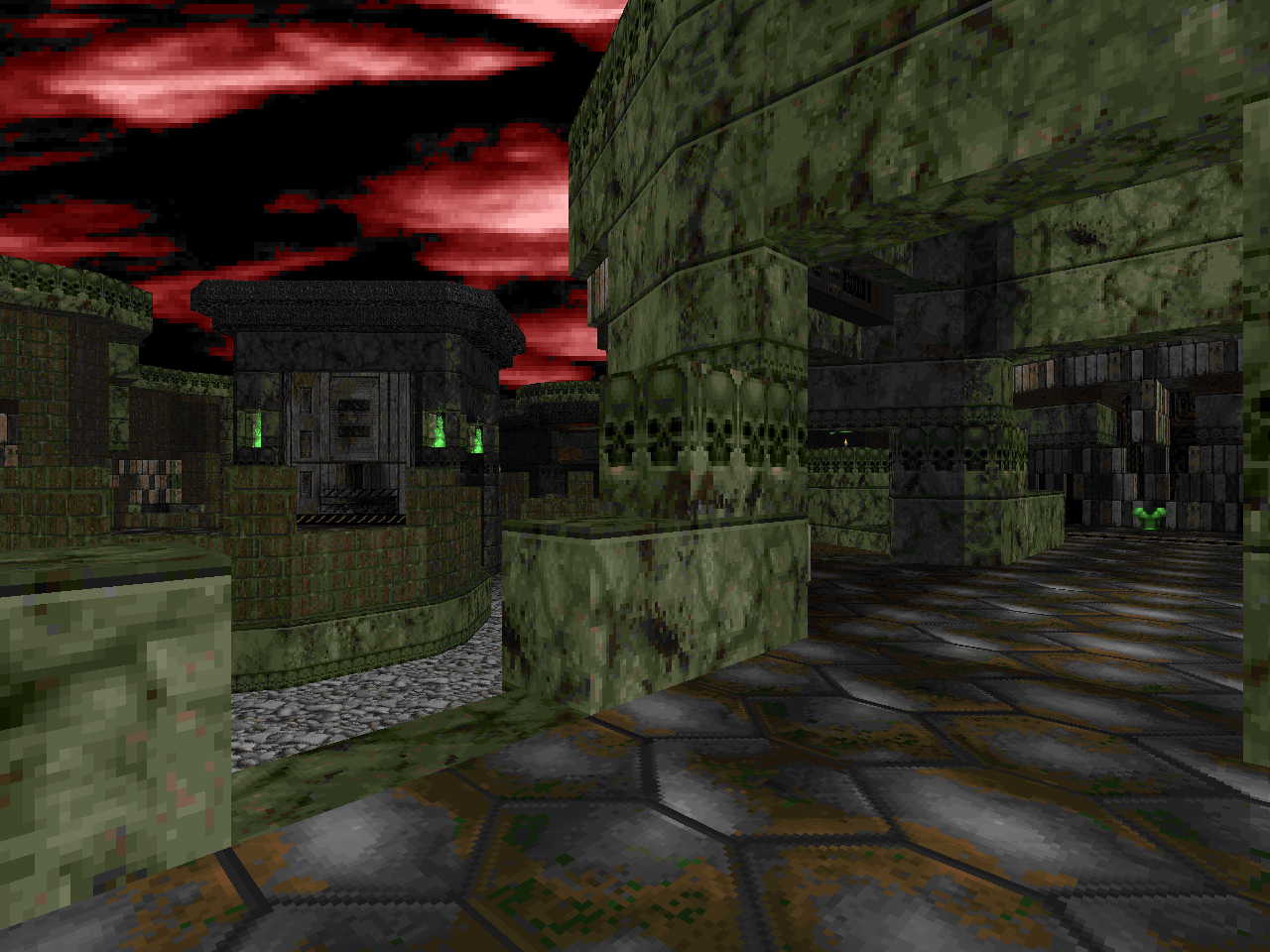
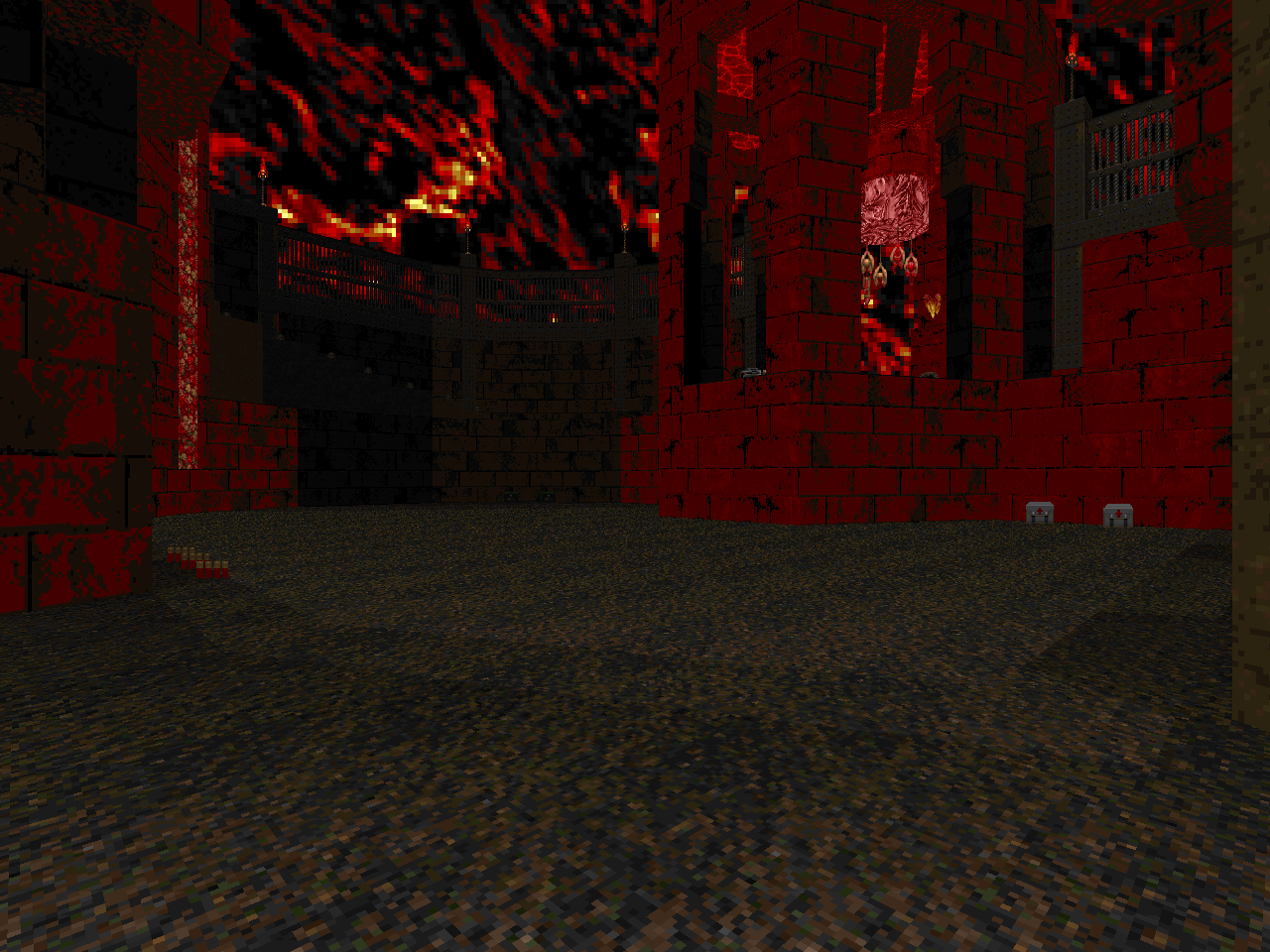
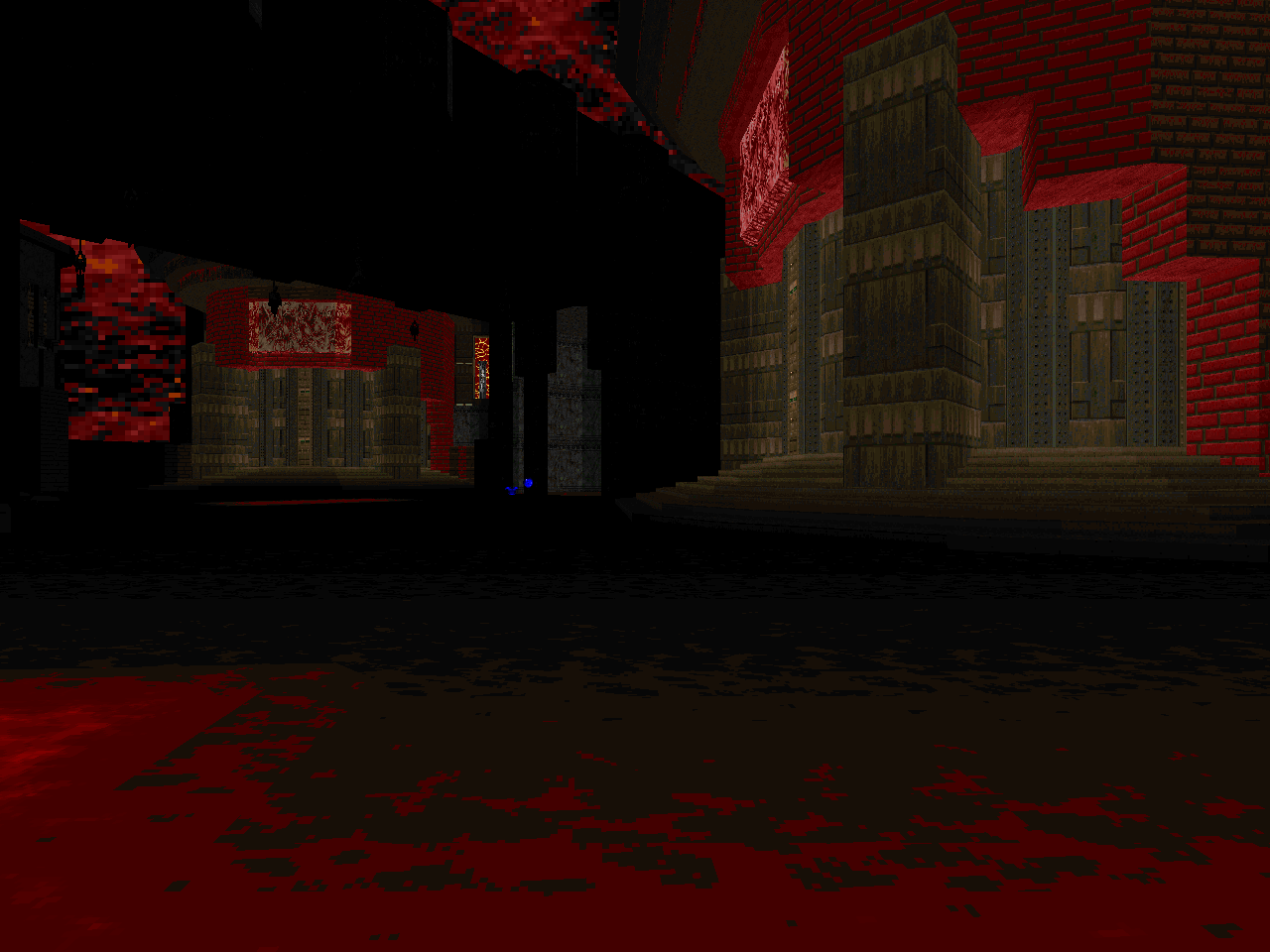
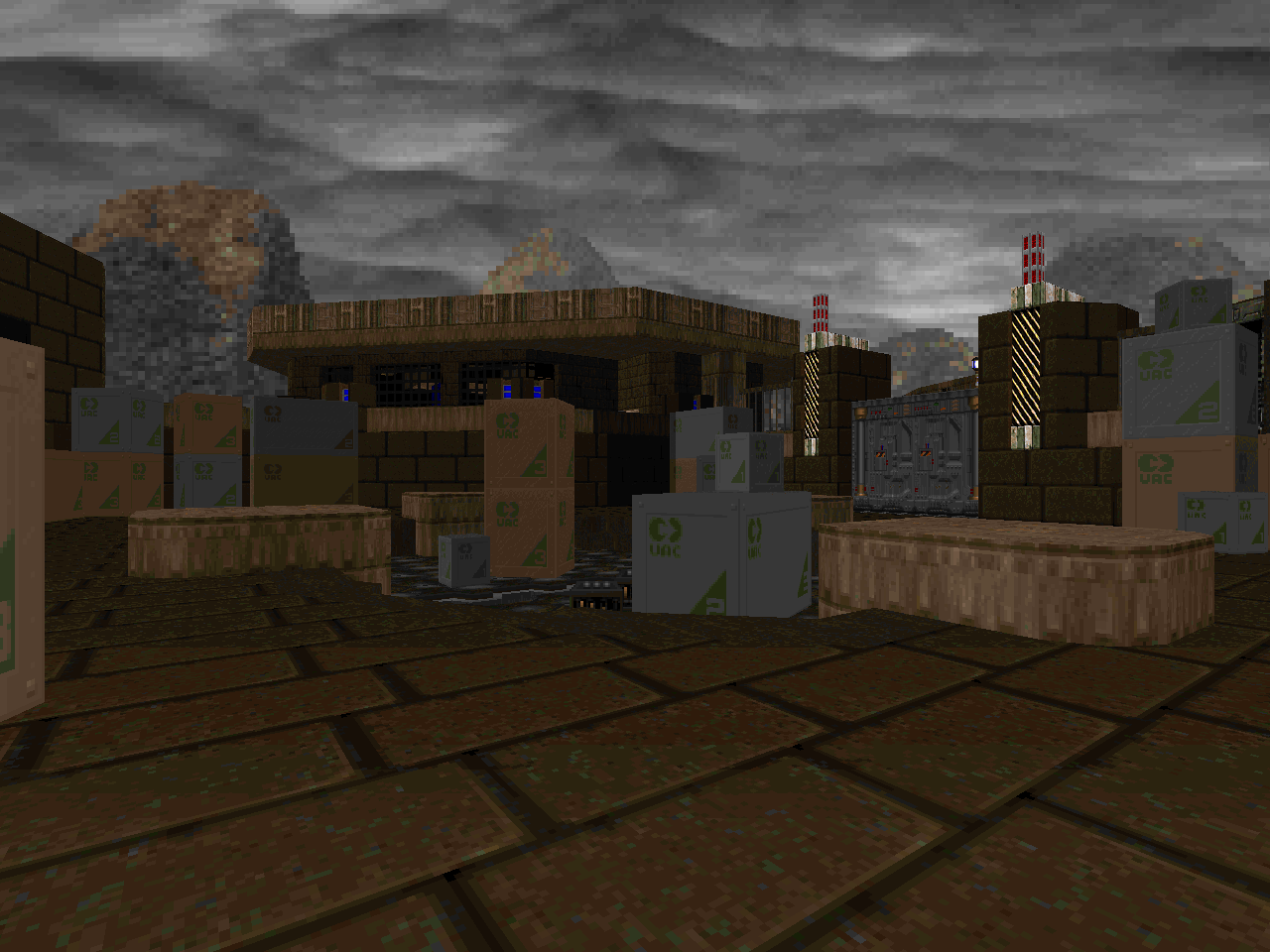
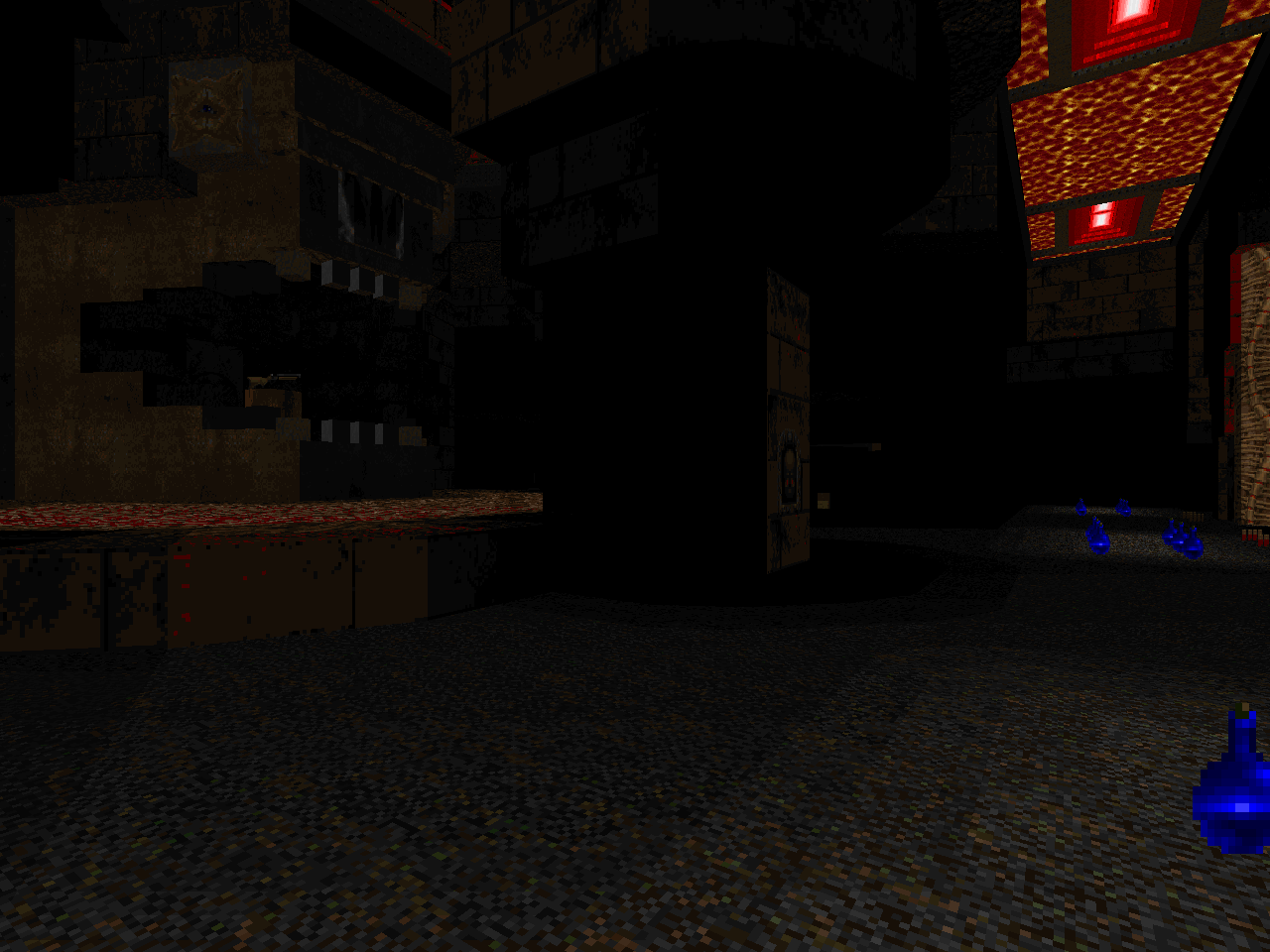
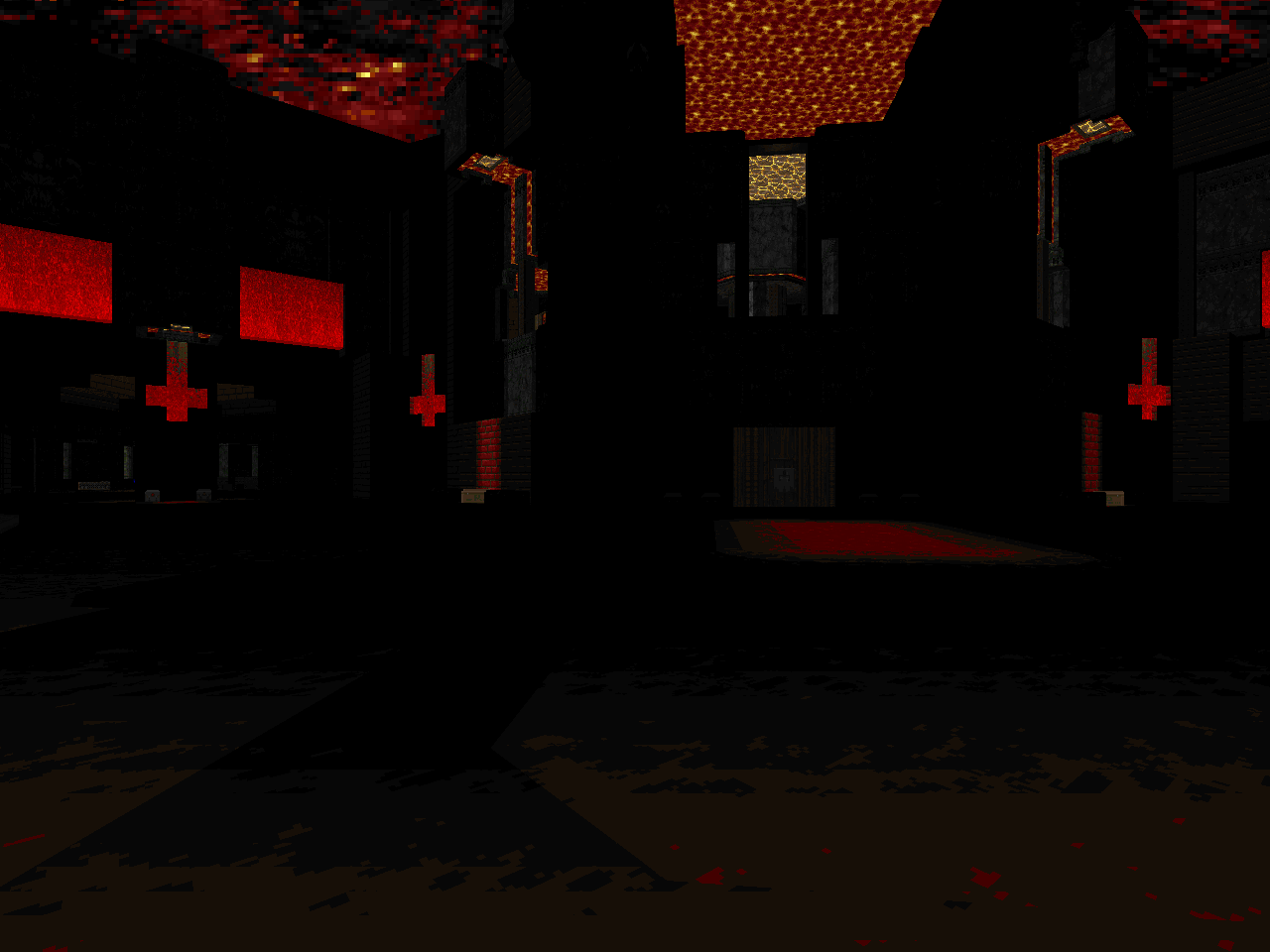
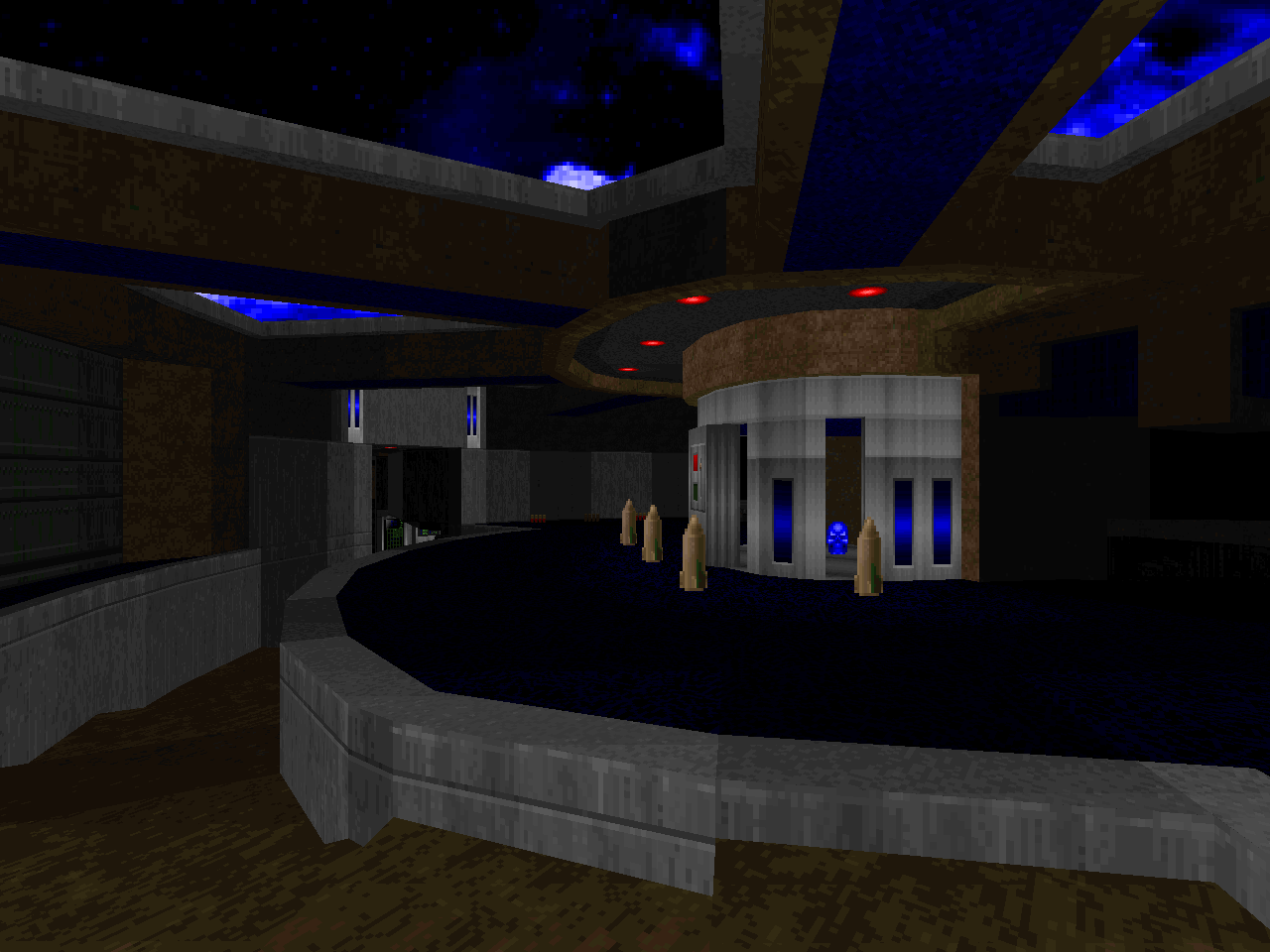
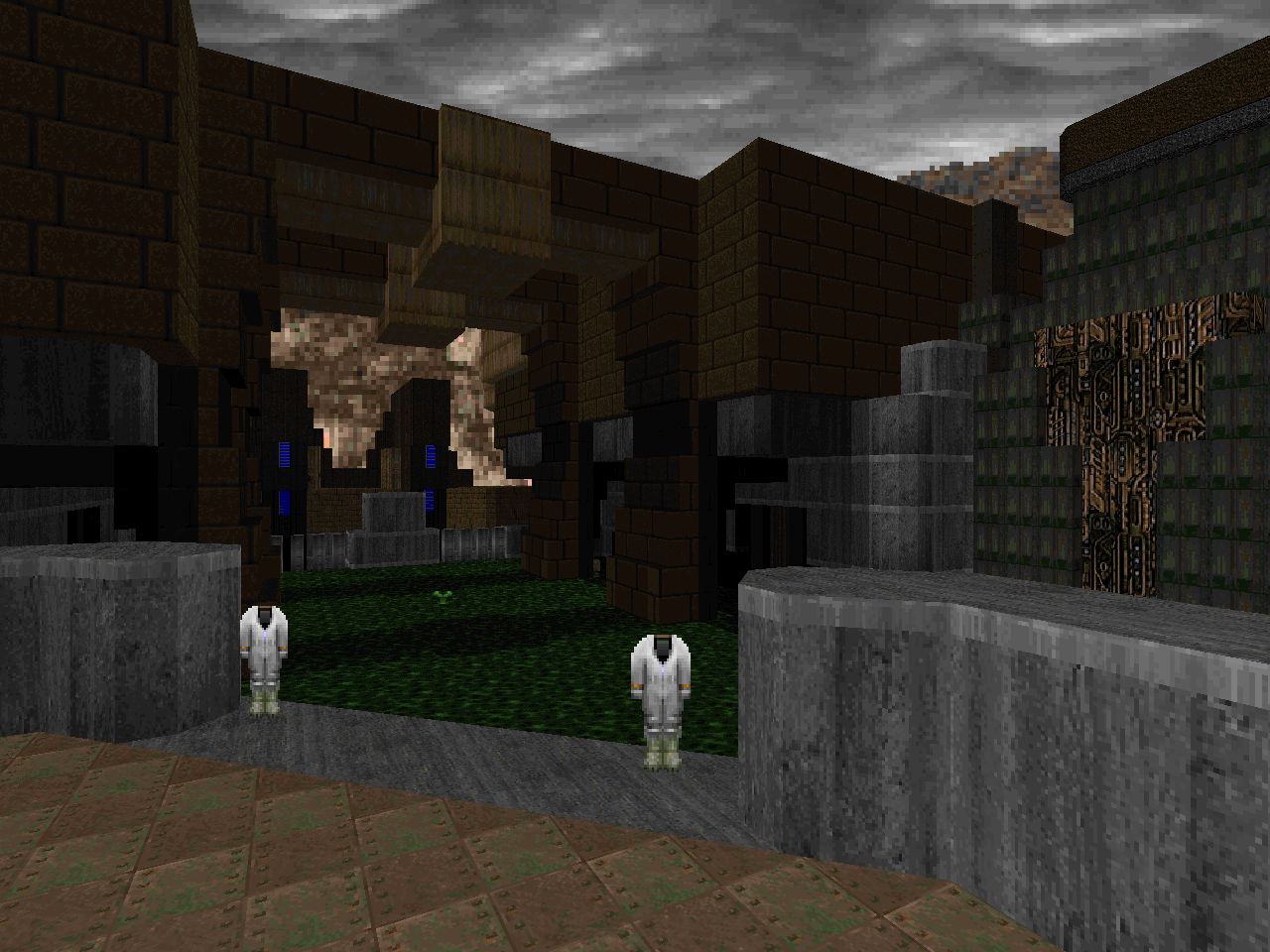

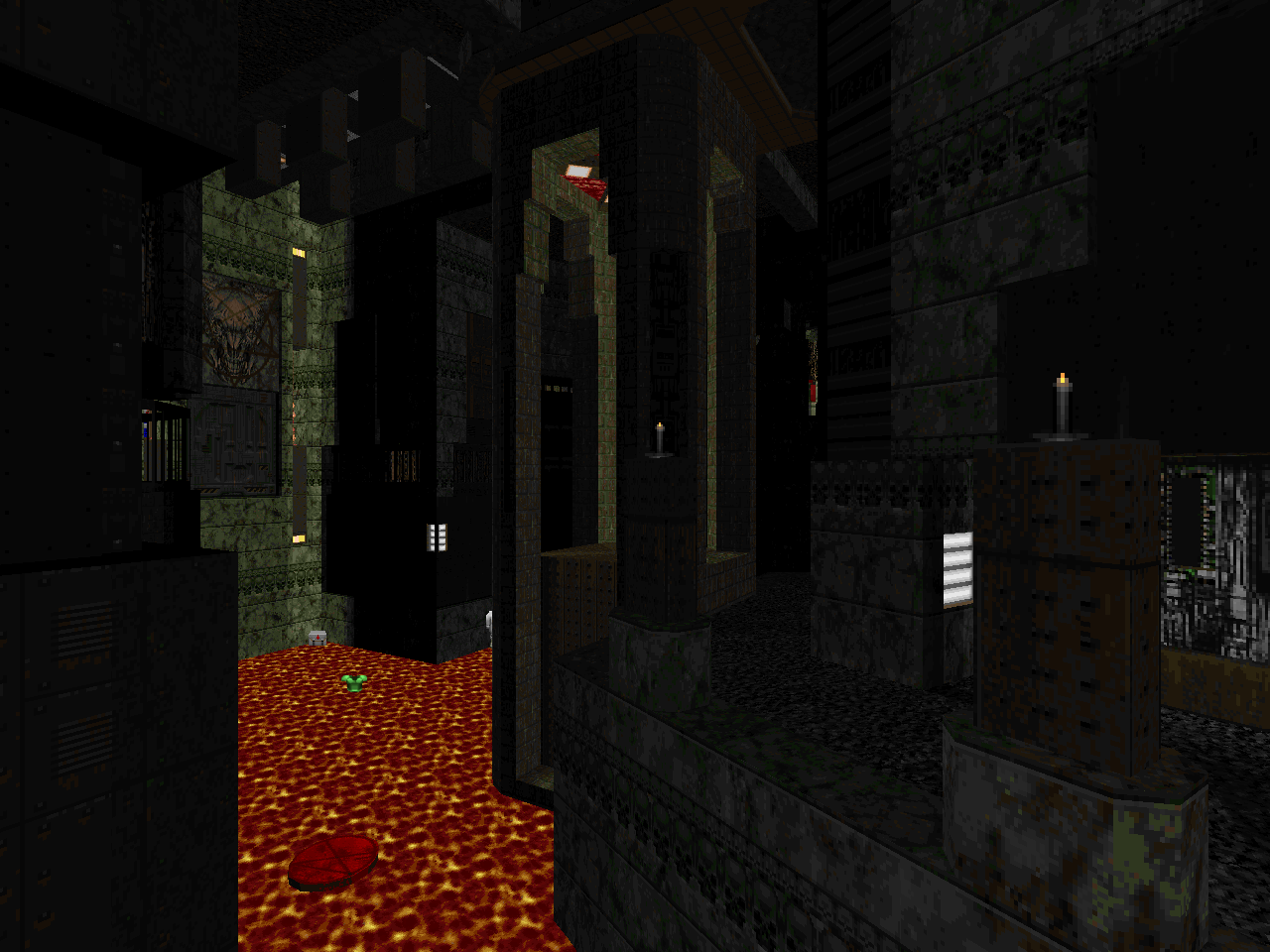
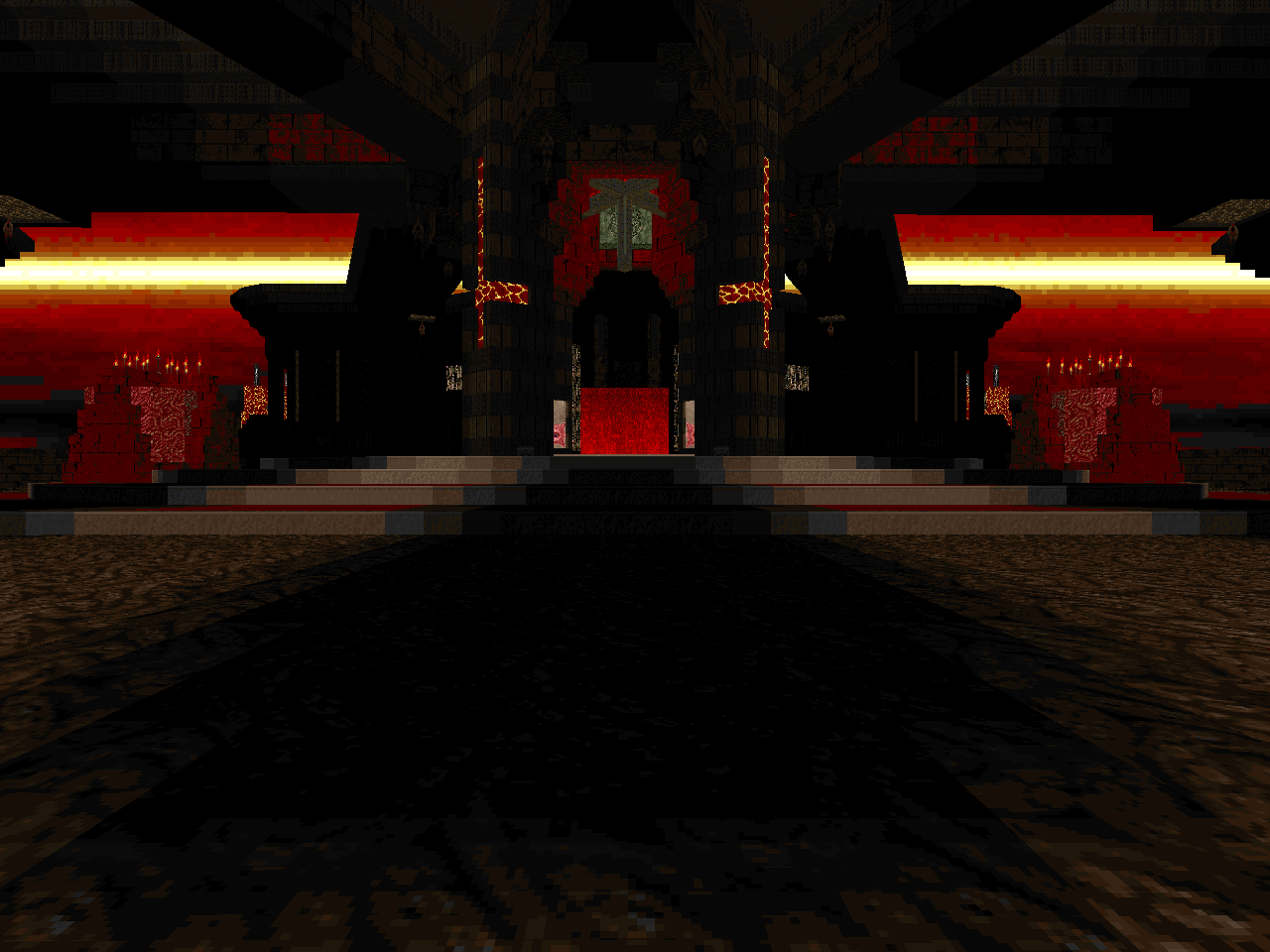
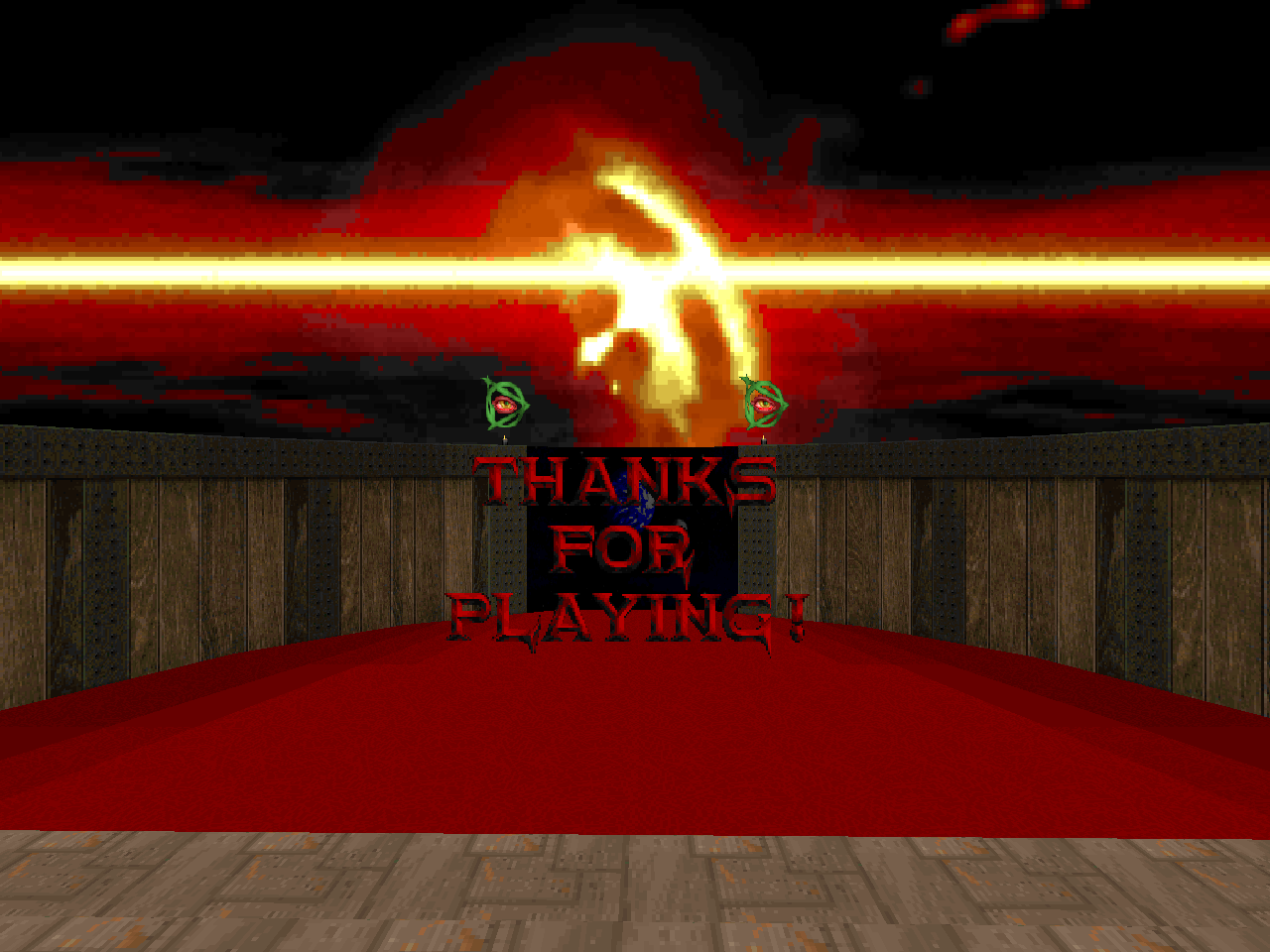
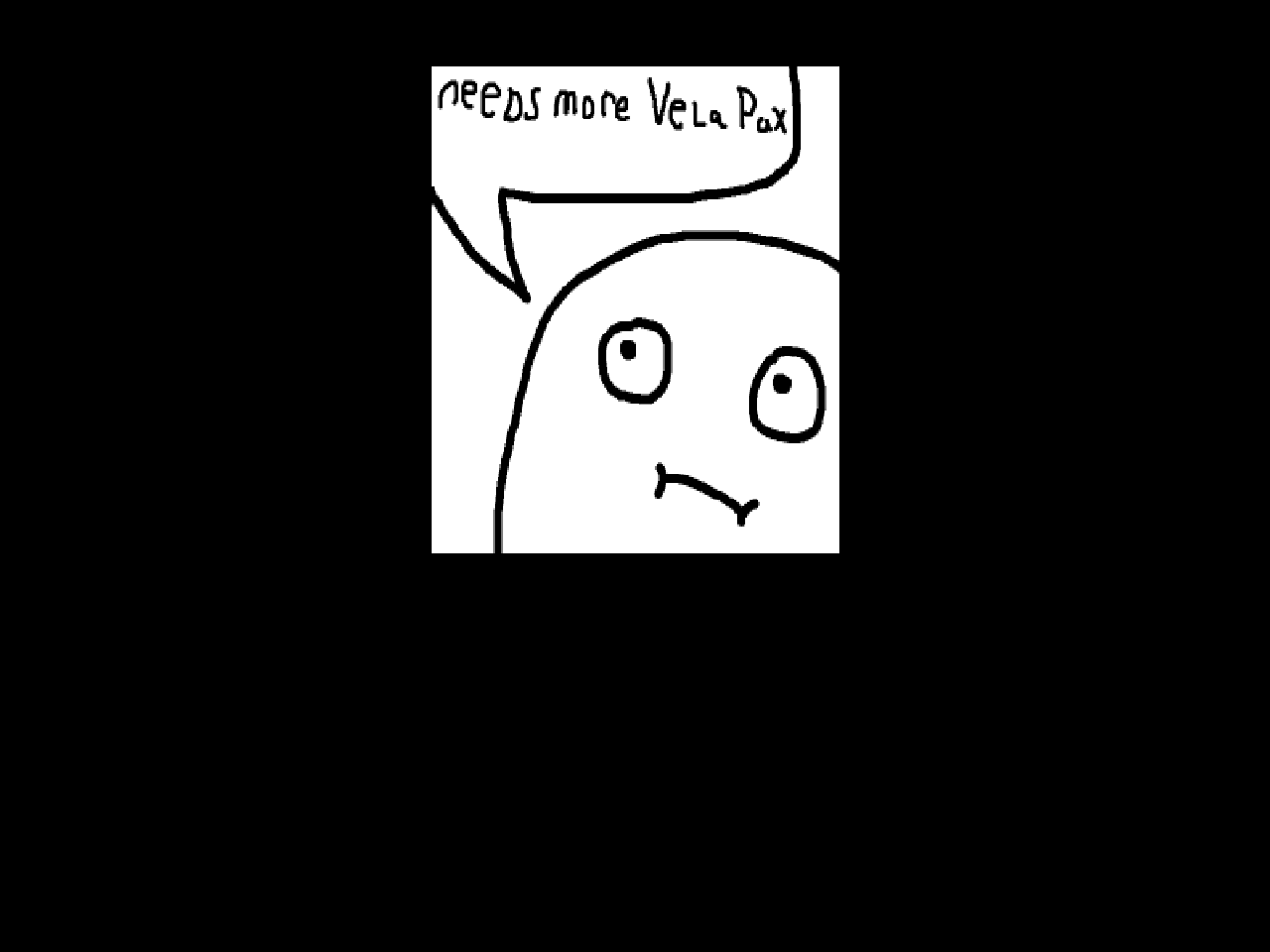
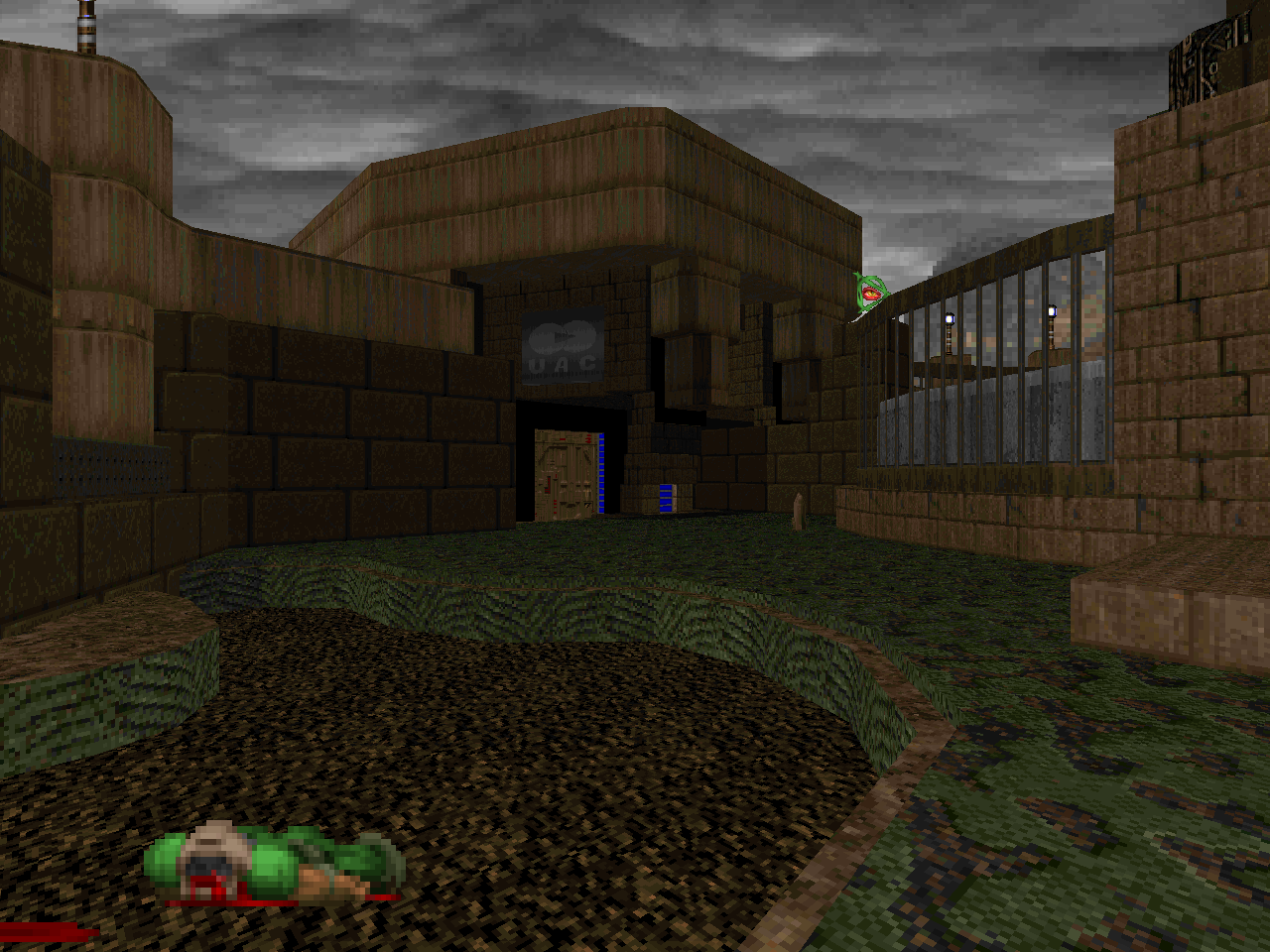
No comments:
Post a Comment